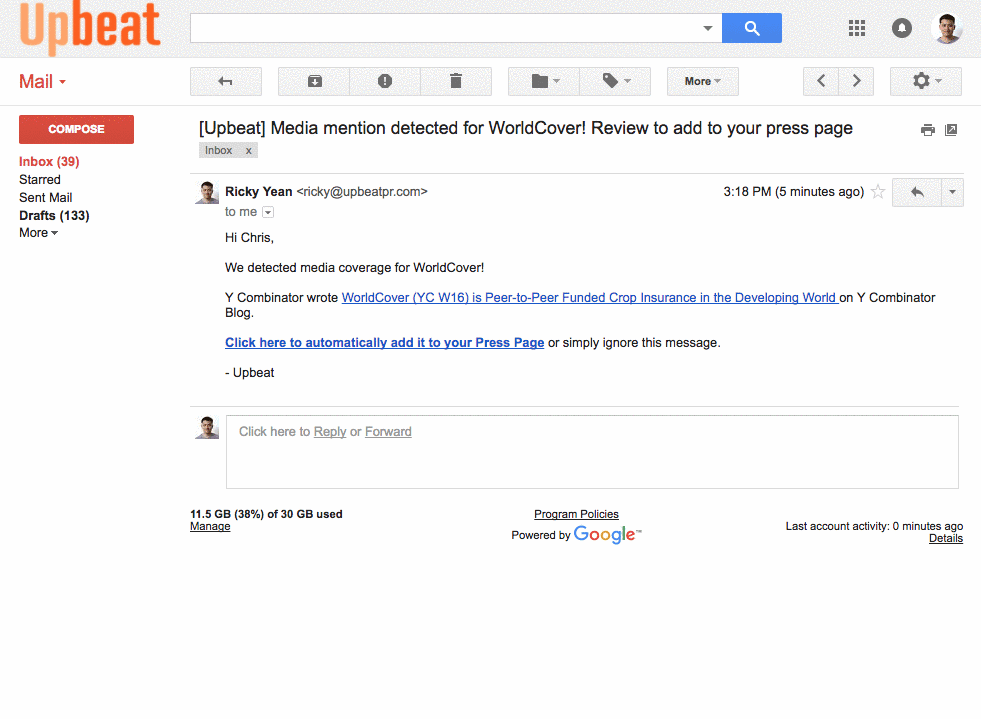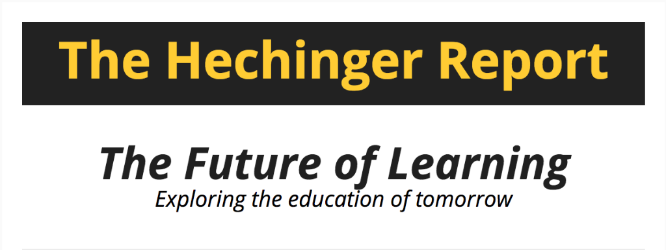Five Things Every Press Page Should Have
by Leo SchwartzCreating a press page is the first step to building relationships with journalists and procuring media coverage. Journalists don’t have time to dig around your website or comb through previous coverage to find the information they need.
The purpose of a press page is to have all of the information a journalist may require in an easily accessible place and format. Companies large and small do this because the press plays a critical role in carrying your message to your intended audience. Pretty much anyone can be “press” these days. You have to be ready. Some great examples of press pages: Stripe, Instagram, Kickstarter, Etsy.

Through working with thousands of journalists, we know there’s a problem with useless and poorly maintained press pages, so we decided to make the process easier by building a simple press page tool that automatically stays updated with your latest news. Our software allows you to build and maintain a press page and embed it on your own website, all for free. You can access the tool here. Below is our guide for what information to include in your press page.

Press Contact
If a journalist has additional questions, designate the best person at your team to answer them. This should be someone who is responsive and can respond to the journalist (ideally) without having to pass the questions on to other team members. Journalists work quickly, and the sooner you can get them answers, the better.
Company Info
The basic information journalists will be looking for is team size, date founded, funding amount, and location. They might also ask about revenue and user traction, but you don’t have to include that on the page if it’s not public. We recommend including notable clients and investors if the information is public to add to your credibility.
About Section
Create a ~500 word summary of your company. The basic questions you should be asking are: What problem is my company trying to solve? Why is it different than any other market solution? Why is it credible? Why is it important to potential readers?
Previous Coverage
Journalists want to see previous coverage for a couple of reasons. First, if your company has procured previous coverage, it establishes credibility. Unless you’re brand new, journalists can use previous coverage to ensure you’re not making up claims. Second, if you’ve pitched the journalists a story or they’re working on one of their own, they can look through the previous coverage to make sure the news hasn’t already been covered.
Don’t go overboard. Try to restrict any links to well-known publications and blogs, and limit it to 5-10 links. With Upbeat’s press page builder, we will automatically notify you when we detect new coverage about your company. Once you receive the email, you can opt to include the coverage on your press page.
Downloadable images
The press page should include a number of different types of images, all high resolution: logos, team headshots, screenshots (if a SaaS product or app), photos of the product (if hardware or something physical). Make sure the images are labeled and accurately named—the labels will show up as image captions in articles.
Journalists prefer “action shots” as opposed to your marketing images. The image dimensions should lend themselves to sharing on social media. We recommend a including a 1,024 x 512 landscape image and a 1,024 x 1,024 square image. Make sure you’re ok with any of the images being included in articles.
If you have any videos—background videos or product demos—include those. Journalists probably don’t want to see your founder’s 40 minute lecture at an obscure conference though.
Previous press releases and blog posts
Include links to previous press releases and blog posts, even if the stories haven’t been covered. This provides journalists with an official record of your company history and can help them accurately portray your progress over time.
Give the press page more exposure
Journalists are trained to look for a press page on your website, so we recommend including a link on your homepage. To make the press page more integrated with your website, we offer the ability to install a version of it on your own website. Here’s an example of WorldCover linking to our press page, and here’s press.gravitational.com resolving to the press page. If a journalist gets in touch with you through a different method, you can always point them to your press page for a professional first impression.
Every press page in the Upbeat network will also benefit from additional media impressions that we drive. Again, you can access Upbeat's free press page builder here.
Campaign of the Month

As the most popular search engine for online courses and MOOCs (massive open online courses), Class Central presents curated and student-reviewed high quality courses to help learners make informed online learning decisions. Every year they release a comprehensive review of MOOC stats and trends.
For their 2017 report, we helped Class Central create a media kit that included a roundup of articles, insights, and end-of-year analysis. We then created a pitch list of education and technology reporters, making sure to specifically target reporters who have covered the MOOC landscape.
We framed the pitch as possible content that journalists could either syndicate or repurpose for their own reporting. We were able to place the report—and establish Class Central as a thought leader and expert source—in publications including the Hechinger Report, Inside Higher Ed, Campus Technology, and eLearning Inside News.
This is now the third campaign we've completed for Class Central, with each campaign centered around new content released on their site. Are you pursuing a content marketing strategy? We can help plan your outreach strategy and get your content published.
